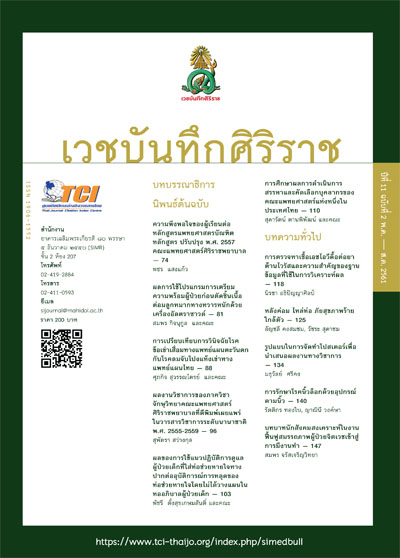ผลของการใช้แนวปฏิบัติการดูแล ผู้ป่วยเด็กที่ใส่ท่อช่วยหายใจ ทางปากต่ออุบัติการณ์การหลุดของ ท่อช่วยหายใจโดยไม่ได้วางแผนใน หออภิบาลผู้ป่วยเด็ก
Main Article Content
Abstract
Objective: To determine the effect of clinical nursing practice guideline for pediatric patients with oral endotracheal intubation (CNPG-EI) on the Incidence of unplanned extubation and to study the risk factors of unplanned extubation in Pediatric Intensive Care Unit at Siriraj Hospital.
Methods: Quasi-experimental research design was used with retrospective data. Unplanned extubation incidence was collected before and after implementation of the CNPG-EI at the PICU. A total of 323 intubation cases were identified. About 78 cases intubated before implementation were served as a control group, whereas 245 cases intubated after the implementation were served as an experimental group. The U-control chart method and Multiple logistic regression were used to analyze the data.
Results: The findings indicated that unplanned extubation incidence rates in the control and experimental groups were not statistically significant difference. However, the rate of unplanned extubation incidence in the PICU after implementation of the CNPG-EI was decreased significantly. The risk factors that were statistically correlated with unplanned extubation were the history of unplanned extubation and sedation score. Besides, patient receiving sedative drug and having sedation score lower than threshold were more likely to have unplanned extubation
than those having sedation score at the optimal level.
Conclusion: The CNPG-EI might be beneficial in decreasing the unplanned extubation incidence under the condition that the patients have to receive sedative drugs until sedation score is at the optimal level.


